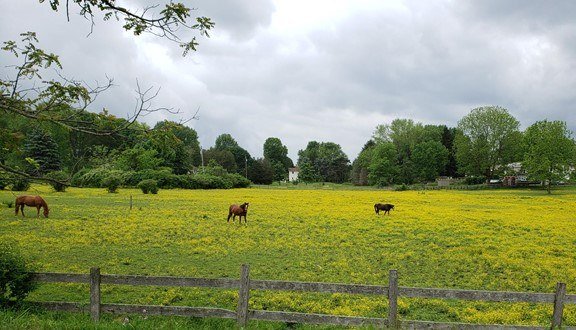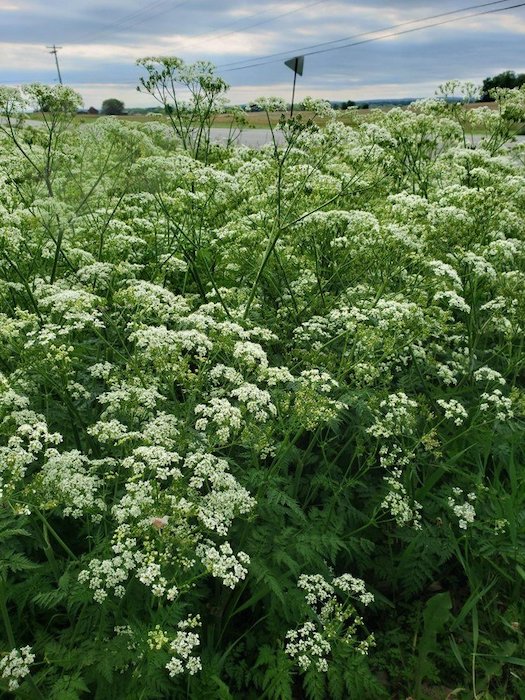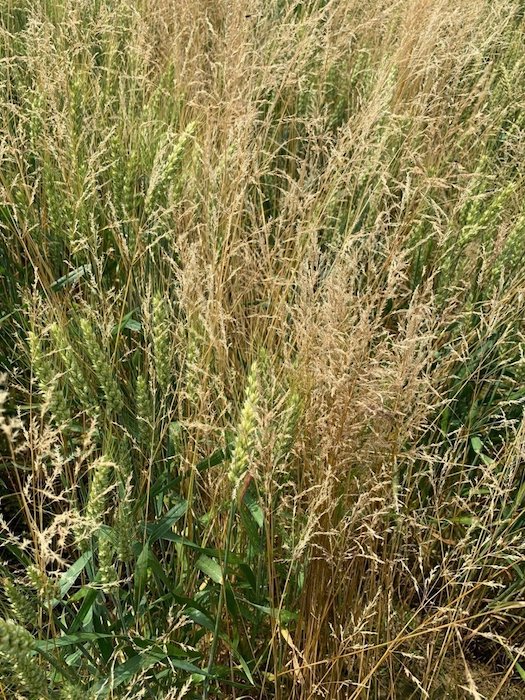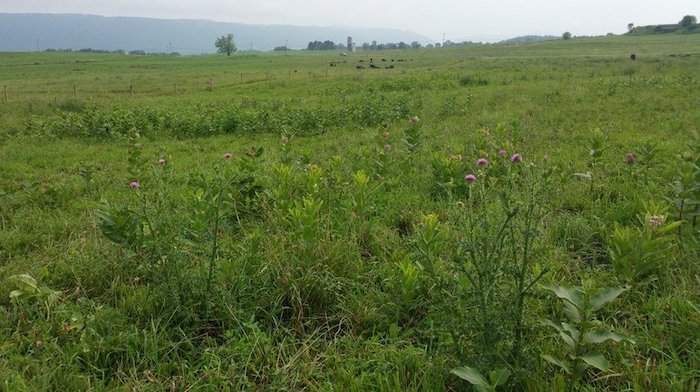By June, it's too late in the year to control several types of weeds. Poison hemlock, buttercup, roughstalk bluegrass and perennial pasture weeds have grown too mature for effective control. Just because you see them doesn't mean you can manage them. Therefore, it is important to consider these options:

1. Buttercup management: Beginning of spring (March - April) is the best time to apply herbicides to buttercup. Spray before it turns yellow. Herbicides such as 2,4-D (2-3 pints/acre), 2,4-D (1 quart) + dicamba (1 pint), metsulfuron/MSM (0.2-0.3 oz), or Crossbow (2-3 quarts) are commonly used to control buttercup.

2. Poison hemlock control: As a biennial, it is wise to apply herbicide when it is most effective, the fall. Apply herbicide when poison hemlock is in the rosette stage or before it bolts. Herbicide is ineffective when the weed is flowering, up to 3-7 feet tall. Effective herbicides include 2,4-D + dicamba, Crossbow (2,4-D+triclopyr) or glyphosate as a spot treatment.

3. Roughstalk bluegrass management: Spread by seed, the roughstalk bluegrass matures when it becomes reddish-tan and sets seed before summer. Once it starts to set seed, no management tactics, especially herbicides will provide adequate control. In the winter, it maintains its green color. It is best to apply herbicide during fall and spring when setting seeds. In studies at Michigan State University, Osprey, Axial XL/Bold and PowerFlex HL provided control of roughstak bluegrass. However, Osprey applied to roughstalk (1-2 inches tall) in the fall or early spring provided the most consistent control.

4. Perennial weeds in pastures: Late spring and summer is not the best time to control perennial weeds like Canada thistle, milkweed and hemp dogbane. Penn State recommends mowing pastures during spring and summer to "set up" the weeds for more effective fall herbicide application. Time the late season mowing to occur early enough to allow perennial weeds to grow about 12-15 inches or so (usually about a month after cutting) before a herbicide application in the fall. Warm-season perennials such as horsenettle, hemp dogbane, common milkweed, smooth groundcherry, pokeweed, bindweed, poison ivy and brambles should be sprayed with a systemic herbicide (such as 2,4-D, dicamba, triclopyr, etc.) from Sept. 1-Oct. 15 or before a hard frost. In general, applications by Oct. 1 may be more effective. In northern areas of Pennsylvania, consider making the application before Oct.1. An additional 2-4-week or more application window can exist for Canada thistle and quackgrass because of their cool-season habit of growth.






